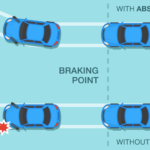
21 Sep Anti-Lock Brakes vs. Conventional Brakes in Ann Arbor, MI
 Safety features in automobiles are constantly evolving. It’s a good idea to stay informed of changing or new technologies that auto manufacturers are installing in our cars. These days Anti-Lock Brakes or ABS come standard on most vehicles. But did you know that they work in conjunction with your conventional brakes? Let’s look at the differences between the two braking systems and examine the best braking techniques for both.
Safety features in automobiles are constantly evolving. It’s a good idea to stay informed of changing or new technologies that auto manufacturers are installing in our cars. These days Anti-Lock Brakes or ABS come standard on most vehicles. But did you know that they work in conjunction with your conventional brakes? Let’s look at the differences between the two braking systems and examine the best braking techniques for both.
Conventional Brakes
Conventional braking is entirely dependent on the skill of the driver. When engaging conventional brakes via the brake pedal, the stopping force is applied equally to all four wheels, slowing or stopping wheel rotation. The driver must manually pump the brakes to maintain steering control if the tires begin to lose traction. In emergency or panic braking situations, the vehicle can often skid out of control once the braking force causes the wheels to stop spinning since the automobile still has forward momentum.
Conventional Brake Components
In general, conventional brake systems have the following components in common.
- Front & Rear Disc Brakes
- Brake Pads
- Brake Caliper
- Piston
- Master Cylinder
- Brake Booster (Hydraulic or Vacuum)
- Hydraulic Brake Line
- Brake Fluid
Conventional Braking History
Back in the day, before ‘power brakes’ were standard on cars, brakes worked on pure pressure. The pressure a driver applied to the brake pedal was the same amount of pressure slowing down the wheels. Seem ineffective? It was. By the 1980s, auto manufacturers embraced a more advanced power-assisted braking system, much like we use today. It utilizes hydraulic assistance (brake booster) to increase the driver’s pedal input. This assistance gives the driver more options when driving and stopping.
Conventional Braking Techniques
So how does all this history translate into braking techniques? Well, a more experienced driver will have more braking techniques to choose from, besides the standard ‘pump the brakes’ method. Their effectiveness will depend on the driving situation and the skill of the driver. Here are three braking techniques used in vehicles with conventional brakes.
Pump Braking
The term ‘pump the brakes’ refers to the practice of firmly applying pressure to the brake pedal, then releasing the pressure momentarily, and engaging the brakes again. This method should allow the driver to maintain steering control without locking up the wheels. Additionally, it can signal the vehicle behind you to slow down. The momentarily flashing brake light may grab their attention quickly, allowing more time for you both to come to a safe stop.
Cadence Braking
Cadence braking is sometimes called ‘stutter braking.’ It is similar to pump braking but performed in a more rhythmic motion or pattern. It is most effective at maintaining steering control in slippery or icy road conditions. It is not very effective at stopping a vehicle quickly. Still, it can slow down your car while enabling you to steer clear of obstacles.
Threshold Braking
The idea behind threshold braking is to use the brakes right up to the point of wheel lock but easing off the brake right before the vehicle loses traction. This method is used often in racing, but a skilled driver can use this method for daily driving as well. Ideally, ‘pump braking,’ and ‘threshold braking’ techniques should be used simultaneously for the most effective and safe braking with conventional brakes.
Trail Braking
This method of braking is popular with car enthusiasts who race on the track. It is a controlled, continuous braking technique used while turning into a corner. Braking in this manner allows an experienced driver to control the weight and pitch of the car, giving more traction to the front or rear of the vehicle, as needed. It also allows a driver to travel around a corner at a higher rate of speed.
Anti-Lock Brakes
Anti-Lock Brakes utilize the vehicle’s onboard computer and wheel sensors to control the wheel rotation automatically. Maintaining constant pressure on the brake pedal is the only thing the driver needs to do. If the wheel sensors detect a loss in traction, the ABS will engage. In emergency or panic braking situations, the ABS will activate, eliminating the need to manually pump the brakes to prevent wheel lock, skidding, or a loss of steering control.
All-Wheel ABS or 4-Wheel ABS
All-Wheel ABS aids steering while preventing wheel lock-up. It applies to all four wheels independently. Almost all new model cars, SUVs, and minivans come equipped with All Wheel ABS as standard equipment.
Rear-Wheel-Only ABS
A few model pickup trucks, vans, and SUVs use Rear-Wheel-Only ABS. It applies to the rear wheels only assists vehicles from spinning out on slick surfaces.
Anti-lock Brakes: ABS Components
In general, ABS brakes work in conjunction with conventional braking systems. Most Anti-lock brake systems have the following components in common.
- ABS Control Module: Computer Microprocessor
- Hydraulic Control Unit (HCU)
- Wheel Speed Sensors
- ABS Warning Light
ABS Braking Techniques
The ABS will not activate if you brake normally for slowing traffic, stop signs, and traffic signals. Being aware of your surroundings and braking early is wise in most situations. If you need to brake suddenly, the ABS will engage, providing you with more stable steering and stopping. When the ABS is activated, always apply smooth, firm pressure on the brake pedal without pumping. Constant pressure will ensure that the ABS functions as designed.
Brake Repair Maintenance in Ann Arbor, MI
If you have noticed issues with your conventional brakes or ABS brakes, bring your vehicle in for a diagnostic service. Ron’s Garage has served Ann Arbor and surrounding areas of Saline, Dexter, and Pittsfield Township since 1982. We offer professional automotive services at a fair price with an emphasis on customer satisfaction. Staff includes three state and ASE certified technicians trained to use the latest tools and equipment when servicing your vehicle. We perform major and minor brake repairs on all makes and models, imported or domestic, up to one ton.
Schedule Your Anti-lock Brakes Service
Please call Ron’s Garage at (734) 961-4701 for same-day or next-day appointments. Otherwise, visit our website for more information or to schedule your next Routine Brake Maintenance Service.

